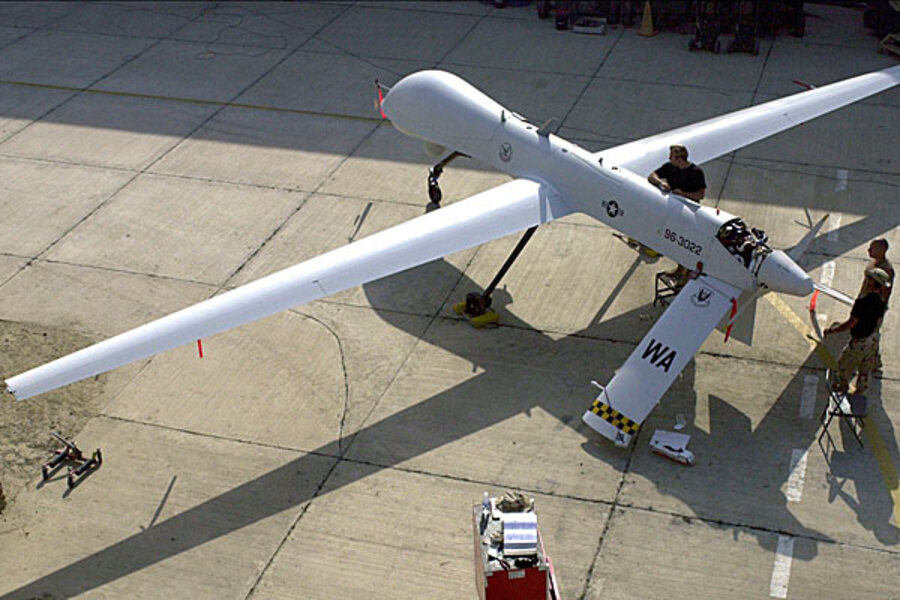Iran fires twice at US drone aircraft, misses
Loading...
| Washington
An Iranian attack aircraft fired at least twice at an unarmed U.S. drone conducting routine surveillance in international airspace over the Gulf, the Pentagon said Thursday. The aircraft missed and the drone returned to base unharmed.
The shooting in the Gulf, which occurred just before 5 a.m. (0900 GMT) on Nov. 1, was unprecedented, Pentagon press secretary George Little said. The incident was not disclosed sooner because the military does not discuss classified surveillance missions, but agreed to answer questions after news reports revealed the shooting.
Little said the drone was about 16 miles (26 kilometers) off the Iranian coast when the Russian-made SU-25 Frogfoot warplane intercepted it and opened fire. He said it was the first time an unmanned U.S. aircraft was shot at in international airspace over the Gulf.
IN PICTURES: Iran's military might
"Our aircraft was never in Iranian air space. It was always flying in international air space," Little told Pentagon reporters. "The United States has communicated to the Iranians that we will continue to conduct surveillance flights over international waters over the Arabian Gulf, consistent with longstanding practice and our commitment to the security of the region."
According to the Pentagon, the Iranian war plane made at least two passes by the slower-moving drone, firing "multiple rounds."
Little said that once the Predator drone came under fire, it began to move further out and the Iranian aircraft continued to pursue it "for some period of time before letting it return to base." The Iranian plane did not follow the drone all the way back to its base, Little said, declining to say where that base was.
He said there was no other U.S. aircraft nearby that could respond to the attack, and added that the U.S. believes Iran was trying to shoot the drone down.
This is the second incident involving a U.S. drone and Iran.
In December 2011 a U.S. RQ-170 Sentinel drone equipped with stealth technology was captured in eastern Iran. Tehran claims it brought down the aircraft, but U.S. officials said the drone malfunctioned and had to land.
After initially saying only that a drone had been lost near the Afghan-Iran border, American officials eventually confirmed the plane was monitoring Iran's military and nuclear facilities. Washington asked for it back but Iran refused, and instead released photos of Iranian officials studying the aircraft.
International waters begin at 12 nautical miles offshore.
IN PICTURES: Iran's military might
Copyright 2012 The Associated Press.







